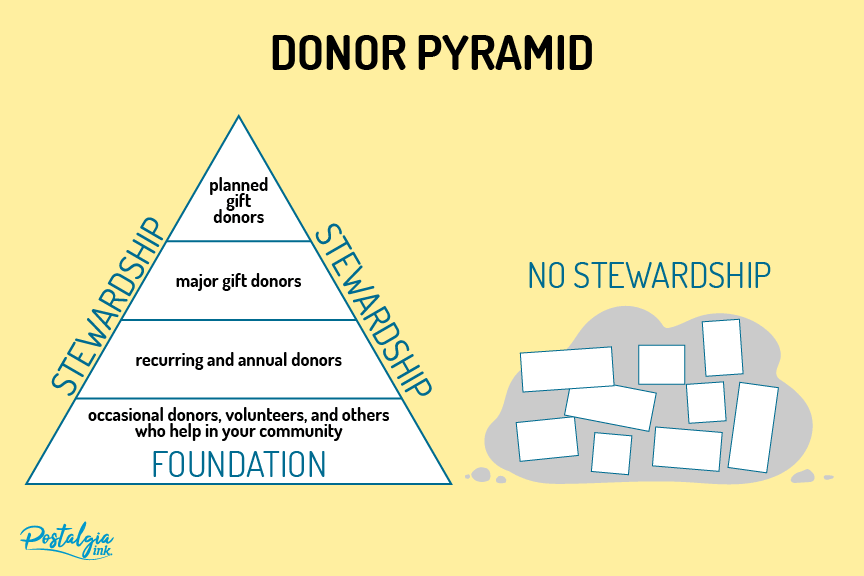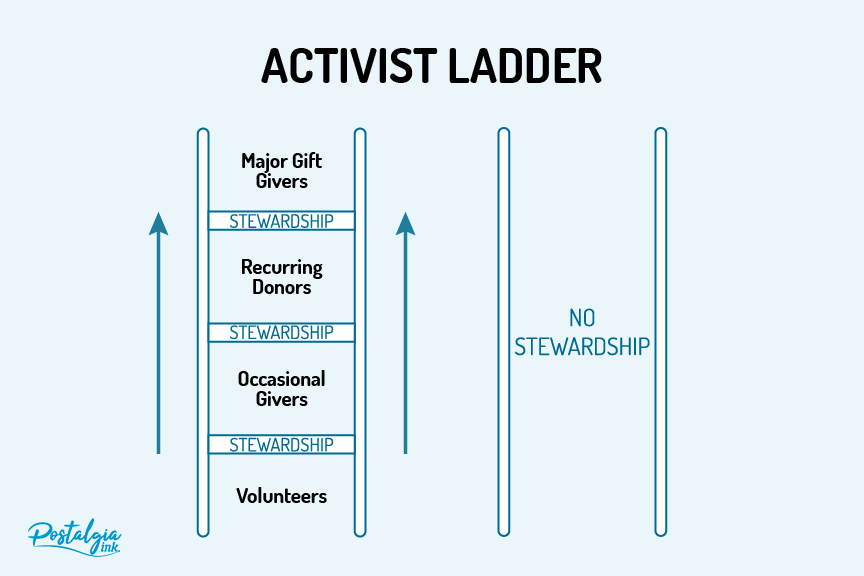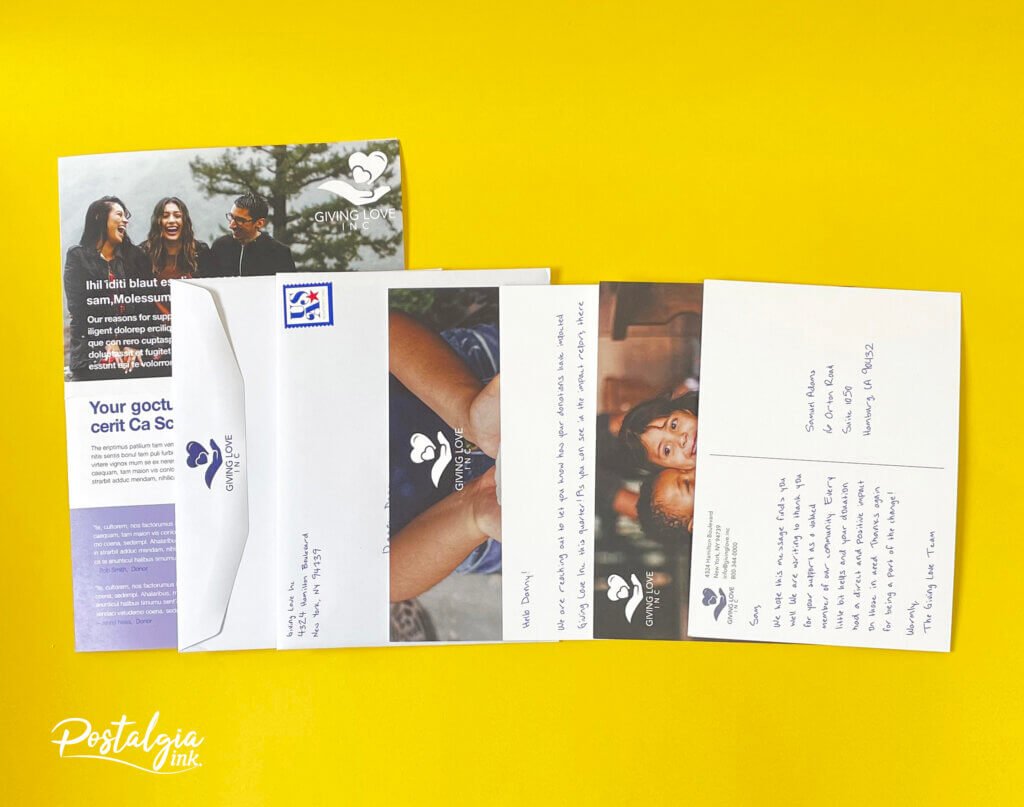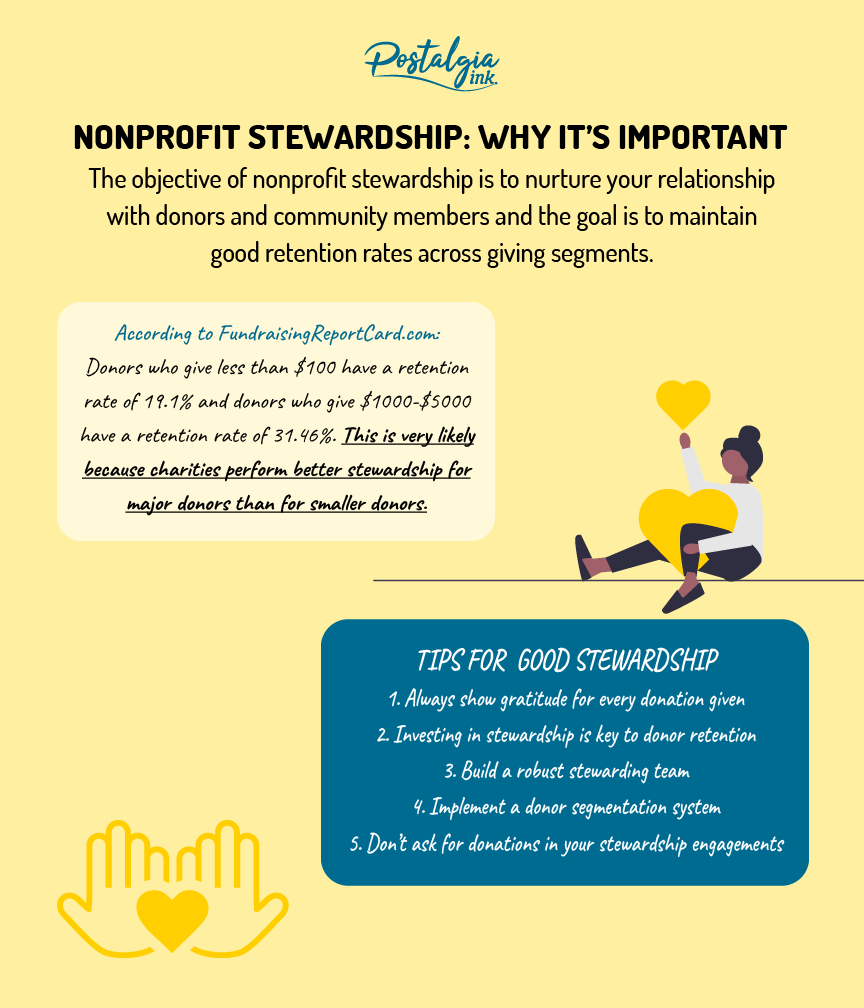Nonprofit Stewardship: Why It’s Important
By: EmMa Matern
March 29, 2023INTRODUCTION
Donor retention is an ongoing campaign, and stewardship is the most important tool to be successful. Major donors have a higher retention rate than small donors. According to FundraisingReportCard.com, donors who give less than $100 have a retention rate of 19.1% and donors who give $1000-$5000 have a retention rate of 31.46%. Many non profits mistakenly think that this is confirmation that they should focus their resources on stewardship of major donors. When in fact they have the cause and effect reversed; the lack of stewardship of small donors is the very reason they have such a high churn rate. The high retention rate among major gifts donors is proof that stewardship works. If non profits were to steward all of their donors at the level they steward their major donors they should expect to see similarly high retention rates across segments often resulting in millions of extra dollars raised.
Key Topics
2. What are the Goals of Stewardship?
3. How does Stewardship help with Donor Retention?
1. What is Stewardship?
The objective of nonprofit stewardship is to nurture your relationship with donors and community members and the goal is to maintain good retention rates across giving segments. Stewardship is how nonprofits reach out and stay connected to patrons. Behind the scenes, stewardship involves collecting donor data, storing it within a CRM, and establishing a robust donor segmentation system. From the supporter’s perspective it involves many touch points reminding donors about the impact that they’re having, expressing gratitude in a meaningful way, as well as introducing them to the lives that they are touching while supporting the cause.

2. What are the Goals of Stewardship
To practice good stewardship requires keeping donors informed about the allocation of their donations and giving them satisfaction that funding is being used effectively and efficiently. Following up with a thank you message after donations is an excellent way to show gratitude. Showing gratitude is one of the cornerstones of developing relationships with donors. Stewardship is never ending and should always be in the process of being improved.

3. How does Stewardship help with Donor Retention?
Stewardship is key to retaining donors. Retaining donors is also more cost efficient than gaining new donors. Stewardship takes time, money, and effort but it is worth it. Nurturing relationships with your big as well as your small donors is important. FreeWill.com uses a pyramid to represent the levels of donors, and you can use it as a visual tool to guide your stewardship decisions. At the base of the pyramid (you can think of this as the foundation) are occasional donors, volunteers, and others who help in your community. This level of participants is essential for your nonprofit to work day to day, so stewardship is very important. In the middle are recurring and annual donors, which is where a large portion of your funding comes from. Then at the top are major gift and planned gift donors, which we mention above could have a high return rate. Use this analogy of donors to base where and how much you invest your stewardship.

Another framework is the activist ladder which employs stewardship to elevate volunteers into occasional givers, occasional givers into recurring donors, and recurring donors into major gift givers.

4. How do you Create a Stewardship Program?
Stewardship is a strategy, so you need to plan a program. Build a robust stewarding team with these key roles: Director of donor relations, Stewardship officer, Relationship manager. With a strong team performing the shared duties of stewardship, a lot can be accomplished.
Organize your donor data into a CRM system to implement donor segmentation, so you can approach your interactions with members with authenticity. With an organized system of your donors information, you can enforce a system that thanks donors when they give a gift. Keeping the donor pyramid in mind, stewardship efforts can be based on need and the gift size.
Highlight donor recognition. Show gratitude. Make your people feel a part of your organization:
- Curate a portal on your organization’s website that acts as a donor appreciation page that gives members the option to show that they have donated when they contribute to the cause.
- Make sure to refer to donors by their preferred named via their preferred method of communication (eg. phone, mail, email, etc).
- Aim to stay in contact with all donors, even inactive donors.
- Plan to run campaigns that focus on your mission and how donors take part in the cause
Set goals that are achievable. There are a few points to aim for in your stewardship program:
- Retaining a certain number of new donors based on a specific campaign
- Receiving bigger donations from a specific section of donors
- Having a increased response rate on account of your program
Setting goals are a great incentive for your team to work towards and are also a way of making improvements to your strategy. You can learn a lot from the results and you can change your strategy as you go.
Stewardship relies on communication, so your stewarding team should organize a communication strategy. This strategy should cover when you will contact donors, plan the contents of each communication piece, communicate upcoming events, letting members know about volunteer opportunities, provide concise and well organized program information, and present relevant stories of people who are part of your organization. All donors are important and need different kinds of engagement, so plan to have a specific strategy for lapsed donors.

5. What are Some Examples of Good Stewardship?
Stewardship is a category of communication. To reiterate, stewardship is about nurturing relationships and maintaining donors. It is like a conversation, you are just trying to stay connected and have wholesome interactions with donors. Stay away from asking for donations and remain on the side of gratitude. You can gain authenticity by sending handwritten letters. In a previous article: 10 pieces of mail to send each year, we have highlighted below examples of stewardship mail.
Stewardship Letter: You would send a stewardship letter to them after they have donated, to keep them informed about how their gift is being used. It often includes an impact report, newsletter or other information.
Thank you Card: You should include in your thank you card: A personalized thank you message, an appealing design, a handwritten note, a signature from a real person, and contact information.You should not include an ask of any kind. This is an opportunity to show gratitude and strengthen the relationship between your donor and your brand, not to ask for more money (though don’t be surprised if your thank you note generates a second gift).
Impact report: The purpose of impact reports (which can sometimes take the form of annual reports, quarterly reports, etc…), are to communicate the progress made helping the people or advancing the cause that your organization is supporting.
Lapsed Donor Letter: Remember that inactive donors don’t think of themselves as inactive, they see themselves as having previously donated to the cause. Simply the act of reminding them that their support is needed can be enough to reactivate a critical mass of your lapsed donors. Others may require reasons as to why they should give, and why now. Be sure to include urgency in your lapsed donor appeal, as well as specifics.
Donor Anniversary Card: A donor anniversary card celebrates a past gift, which has the simultaneous effect of promoting gratitude – like a thank you card – and reminding donors that their support is needed – like a lapsed donor letter. One of the reasons that these cards are so effective is that people tend to behave seasonally, and whatever triggered their generosity at this time last year is likely to do so again this year. The focus should be on celebrating your donor for their past gift, while thanking them for their implied future support.
CONCLUSION
Stewardship is about sustaining your relationship with all your donors. Each type of donor plays an important role in supporting your nonprofit organization. Continually investing in and improving your stewardship efforts will have an outsized impact on engagement as well as impact.
Traditionally, stewardship has required a large investment of resources and time, which has made it difficult for smaller organizations and leaner teams to extend good stewardship past a few large donors.
Postalgia strongly believes in giving the major gifts experience to ALL donors employing personalized handwritten mail, which has been shown to re-engage lapsed donors, increase retention rates, and increase gift amounts. Contact us today to discuss your next mail campaign.

